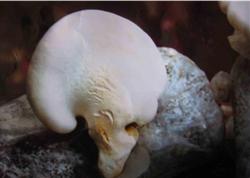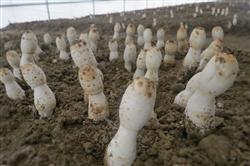Why is Bailing mushroom deformed?

Why is Bailing mushroom deformed? Please introduce the reasons why the malformation of Pleurotus ostreatus leads to the reduction of the grade of the products, and some even lose the commercial value, which seriously affects the economic benefits of the growers. The main reason for the emergence of deformed Pleurotus ostreatus is that the external culture conditions do not meet the growth requirements of Pleurotus ostreatus. It is characterized by poor coordination of temperature, humidity, light and gas when mushrooms are produced, or mistakes in management. First, the design of mushroom shed is unreasonable. The cultivation places of Pleurotus ostreatus are mainly divided into indoor and outdoor mushroom sheds, most of which are poorly constructed and defective. Some mushroom house doors and windows or vents are not ventilated due to unreasonable design, resulting in poor indoor air circulation or poor ventilation. Although some mushroom sheds are equipped with vents, the vents are facing both ends of the fungus wall. There are also some vents, but just to keep warm, they never open them. Due to poor ventilation in the shed, resulting in serious hypoxia, resulting in the deformity of Pleurotus ostreatus. Second, the arrangement of the Yin wall is not scientific. When some bacterial bags enter the shed, the barrier is too high, even more than 1 meter; some of the soil filled between the bacterial walls is slightly sticky, resulting in the impermeability or poor permeability of the soil, affecting respiration; and some bacterial walls are arranged too densely and do not fill the soil in the middle. In addition, the water in the bag is not enough, so the water in the bag is absorbed by the fill when the buds are accelerated in winter, which makes the mycelium dehydrated and deformed mushrooms appear. Third, lack of nutrients. For example, cottonseed hulls and wheat bran are affected by damp mildew and nutrient loss. The low dosage of wheat bran can not meet the normal needs due to the lack of nutrition in the growing mushroom stage. In addition, the water in the bacterial bag evaporates, resulting in the dehydration of the mycelium. All these can cause the deformity of Pleurotus ostreatus. Fourth, the budding technology is not in place. After physiological maturation of mycelium, low temperature stimulation of 0: 13 ℃ was needed for 10-15 days, and temperature difference stimulation of more than 10 ℃ for 5-7 days was needed to force the primordium to differentiate into mushroom buds. This is a distinctive feature of Pleurotus ostreatus. Growers often do not master this unique species, and the low temperature squatting period is insufficient, and the temperature difference stimulation is not enough, which leads to the inhibition of fruiting body development and deformation. Fifth, the mistake of soothing lei. Some growers are very happy to see the mushroom bud, knowing that the mushroom bud is too dense, but also reluctant to take it off. There are others who are sparse but leave too many buds. In short, due to improper bud thinning, the variation of Pleurotus ostreatus was finally caused. Sixth, improper management of mushroom production period. During the period of mushroom production, it is often due to poor regulation of temperature, light and gas, resulting in the development and deformation of mushroom body, or late harvest, oversized mushroom body, resulting in Bai Ling mushroom deformity. Click to get more Pleurotus ostreatus planting techniques click to get more edible mushroom planting techniques
- Prev

What is Coprinus comatus and how to grow and manage it?
What is Coprinus comatus and how to grow and manage it? Please introduce Coprinus comatus, also known as Maotou Ghost Umbrella, which belongs to the subphylum Basidiomycetes of Fungi. Coprinus comatus meat is tender, delicious and delicious. According to analysis, fresh mushrooms contain 92.2% moisture; every 100 grams of dried mushrooms contain 25.4 grams of crude protein.
- Next

How does Angelica dahurica grow and manage?
How does Angelica dahurica grow and manage? Please introduce angelica dahurica Angelica dahurica is suitable to grow in sandy loam and loam with flat terrain, deep, loose, fertile and well-drained soil. 1. Sowing: Angelica dahurica in spring before and after the Qingming Festival and in autumn from the End of Heat to White Dew.
Related
- Fuxing push coffee new agricultural production and marketing class: lack of small-scale processing plants
- Jujube rice field leisure farm deep ploughing Yilan for five years to create a space for organic food and play
- Nongyu Farm-A trial of organic papaya for brave women with advanced technology
- Four points for attention in the prevention and control of diseases and insect pests of edible fungi
- How to add nutrient solution to Edible Fungi
- Is there any good way to control edible fungus mites?
- Open Inoculation Technology of Edible Fungi
- Is there any clever way to use fertilizer for edible fungus in winter?
- What agents are used to kill the pathogens of edible fungi in the mushroom shed?
- Rapid drying of Edible Fungi

